Disclosure: some of the links you'll find here are affiliate links. When you use them to grab some embroidery goodies, I may earn a teeny tiny commission at no extra thread to you.
Hand embroidery is a wonderfully relaxing hobby that's both budget-friendly and capable of producing stunning results, regardless of your skill level. So, let's explore all the materials you need to kickstart your hand embroidery journey!
Embroidery Hoops
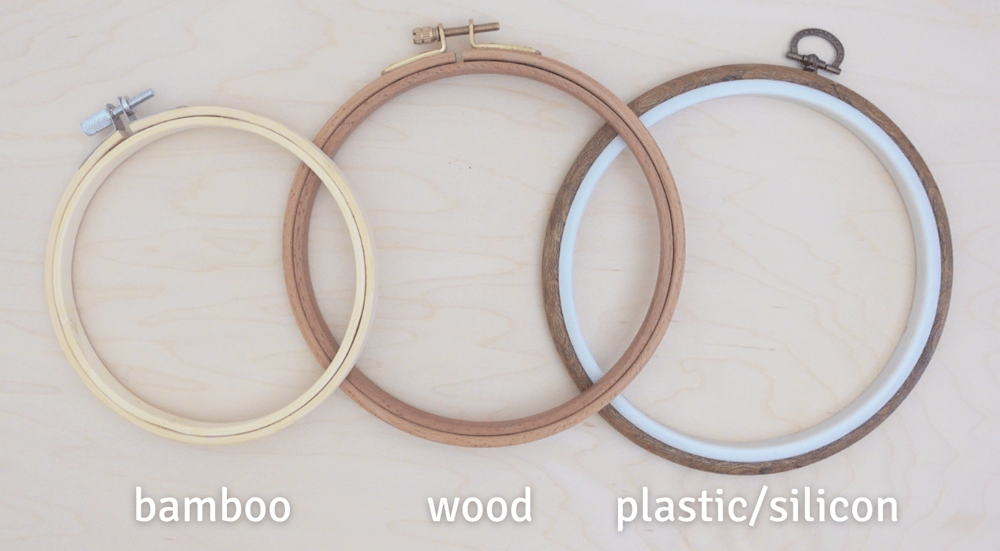
Embroidery hoops are a must-have, and you'll find them in various materials like bamboo, wood, and plastic/silicon. Each has its unique perks.

Bamboo hoop
Bamboo hoops, known for their lightweight and affordability, are perfect for a rustic, no-frills look. However, they can occasionally have splinters and gaps, so wrapping them in lightweight fabric is a good idea. This will also helps provide extra grips for your fabric.
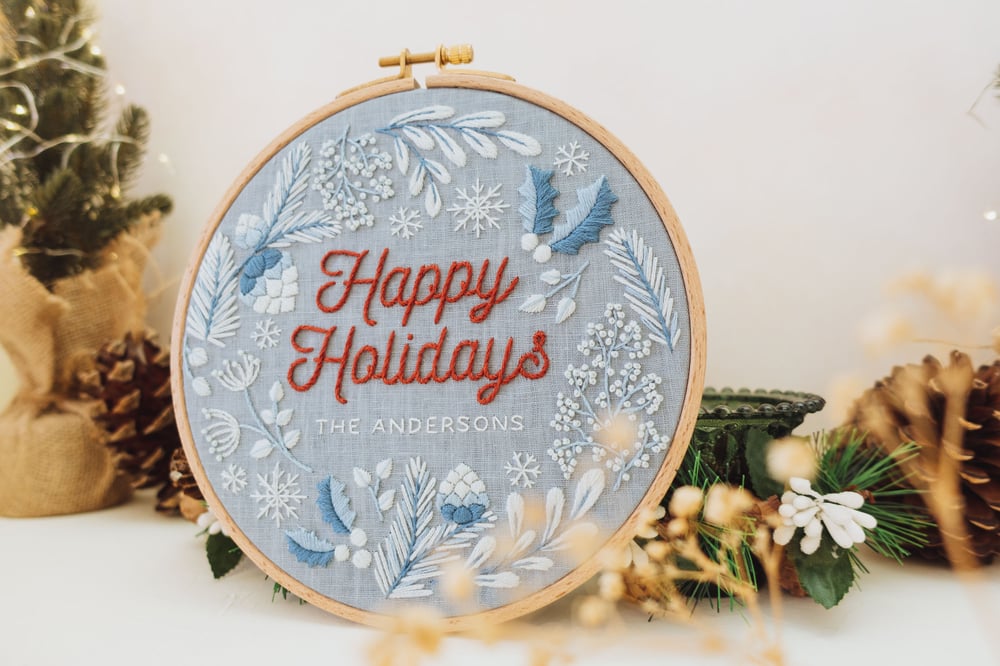
Wooden hoop
Wooden hoops offer a strong grip, deep attractive color, and timeless framing aesthetic but can be a bit heavier and pricier.
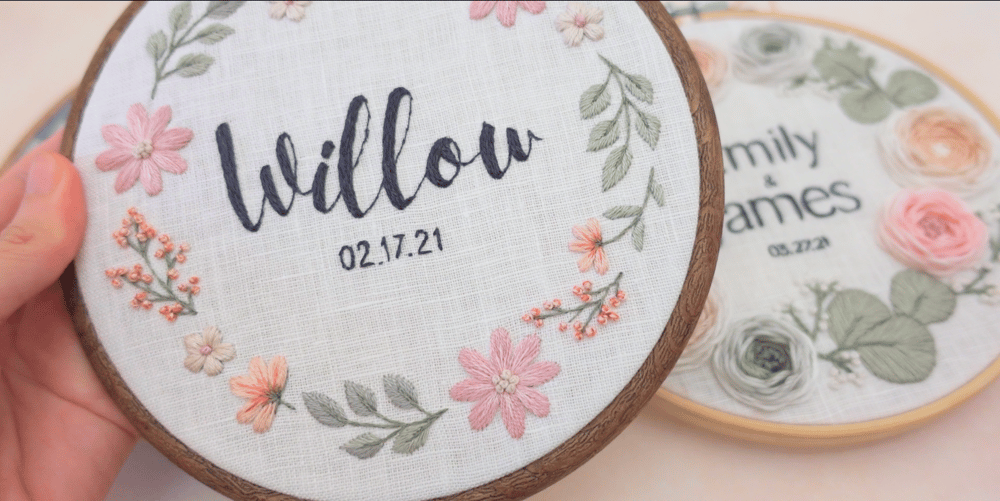
Plastic/silicon hoop
Plastic/silicon hoops have embossed effects that mimic wood grain, and the tight gap between the silicon and plastic frames allows the fabric to stay put well. The hoops also look great and are ready to frame.
There's really no wrong choice choosing among these materials so you can make a decision based on your budget and material reference. My verdict would be:
- Affordability: bamboo hoops
- Classy: wooden hoops
- Practicality: plastic/silicon hoops
Embroidery Stands
In addition to a quality hoop, I highly recommend considering an embroidery stand as an essential tool. While it's not a necessity when you're just starting out with the hobby, it becomes increasingly valuable as you become more committed to embroidery.
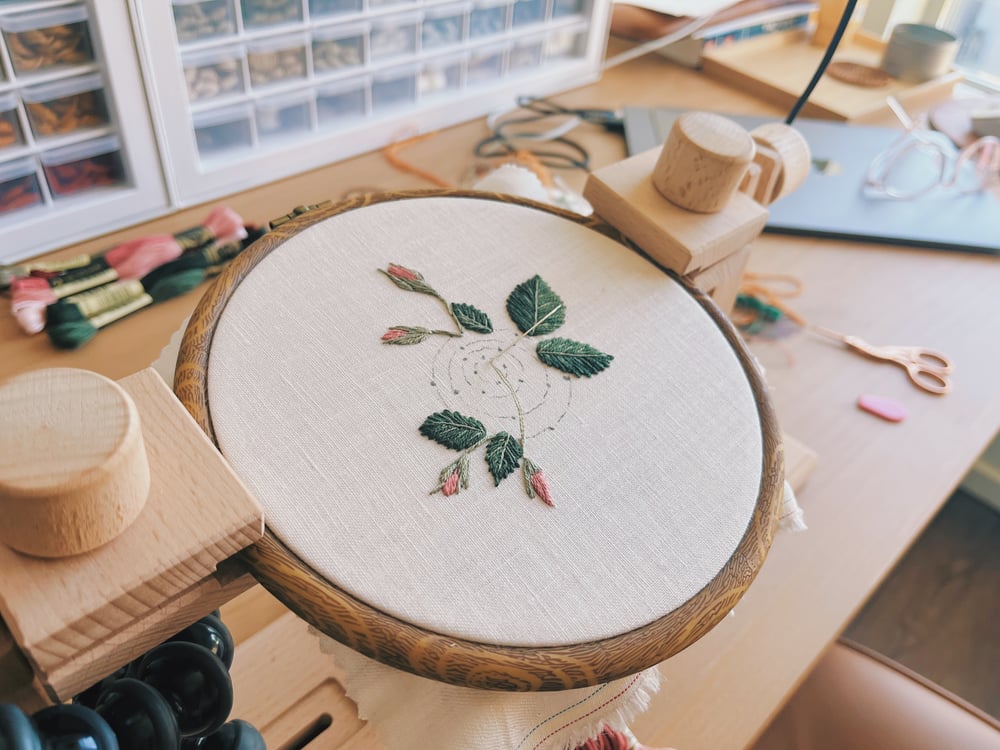
An embroidery stand offers the advantage of using both hands simultaneously, which not only speeds up the stitching process but also minimizes strain on your wrists. This is especially helpful for stitches like the French Knot and Cast-On stitch that require both hands.
Depending on your personal preference and workspace, you can opt for either a floor stand or a table stand. Both options are sturdy, reasonably priced, and fully adjustable to accommodate your preferred embroidery positions.
Embroidery Threads
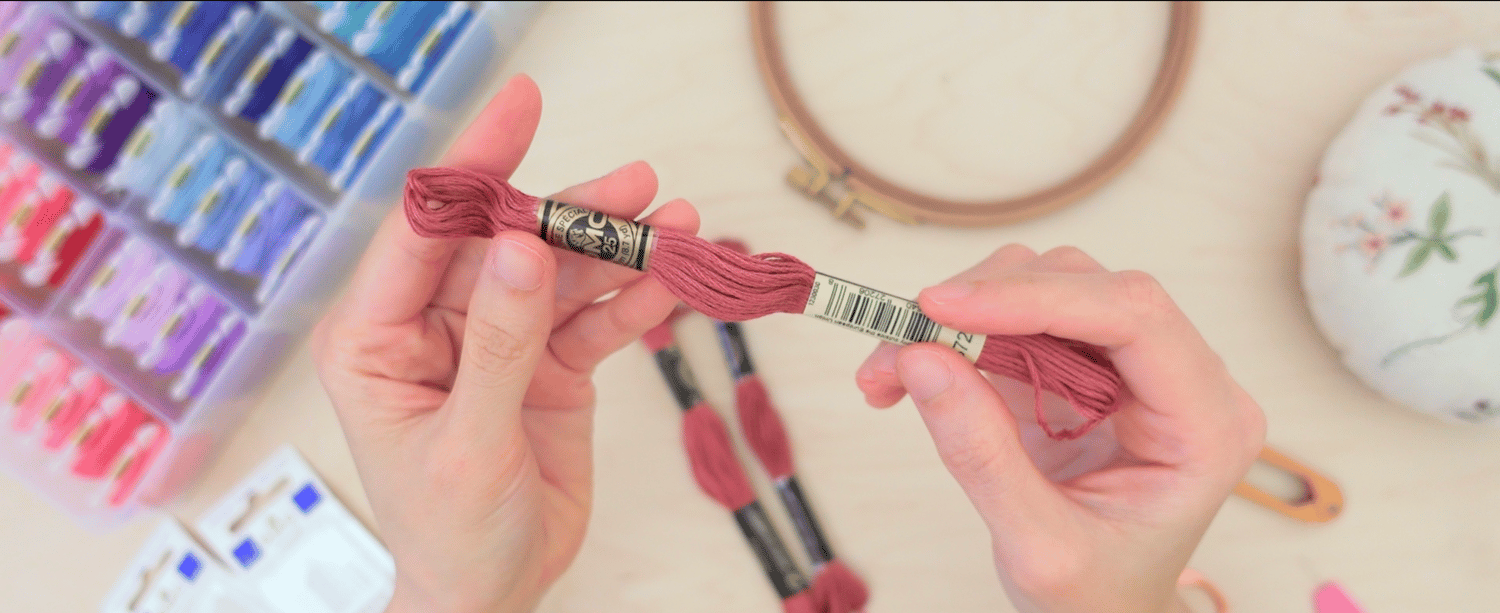
Six-strand embroidery floss is the most common type, and you can split it into six strands, allowing for versatility in thickness. In my embroidery patterns, you will often see instructions like Satin stitch (4) meaning we will use 4 strands of thread with this stitch. If you want to learn how to easily separate the threads, I have a video here.
Perhaps the most recognised brand for embroidery threads is DMC. DMC's popularity is why I use their color codes for all of my patterns, but don't feel obligated to stick to it.
DMC quality is undeniable and it's a joy to work with beautiful, high quality materials but many other well known brands use DMC color codes or have conversion charts, so as long as you can find colors that are similar, it's perfect fine.
I often choose threads' brand based on the project's purpose. If the project is to be framed immediately after completion, any brand will work. Feel free to go for an inexpensive option.
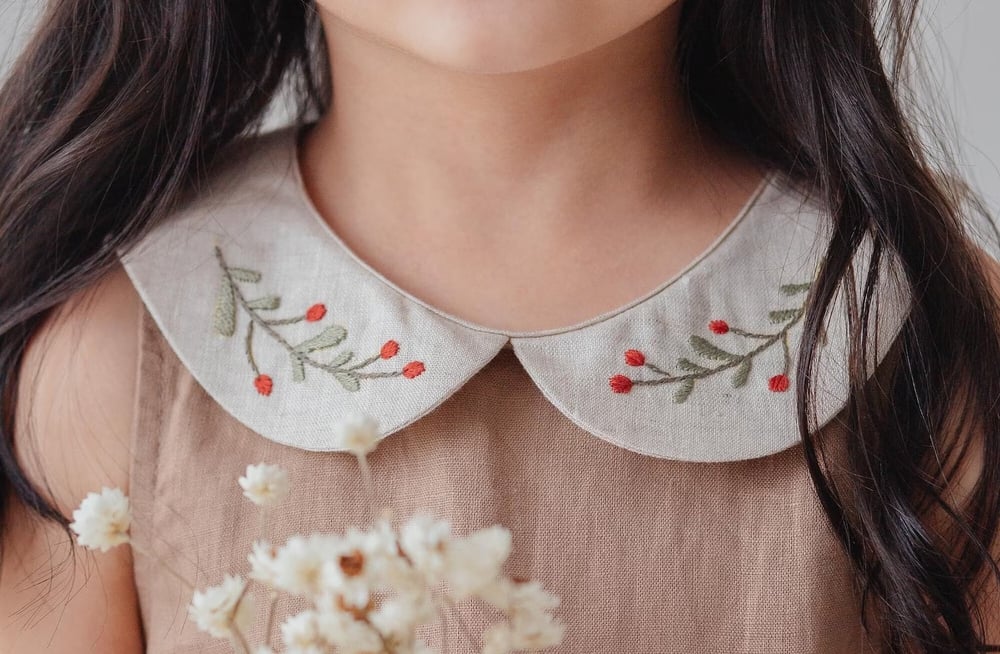
use high quality thread for washable, iron-able items
However, thread quality matters more if your project involves washing and ironing, as premium threads are often made of mercerized long staple cotton that offers great durability, nice sheen, and color-fastness.
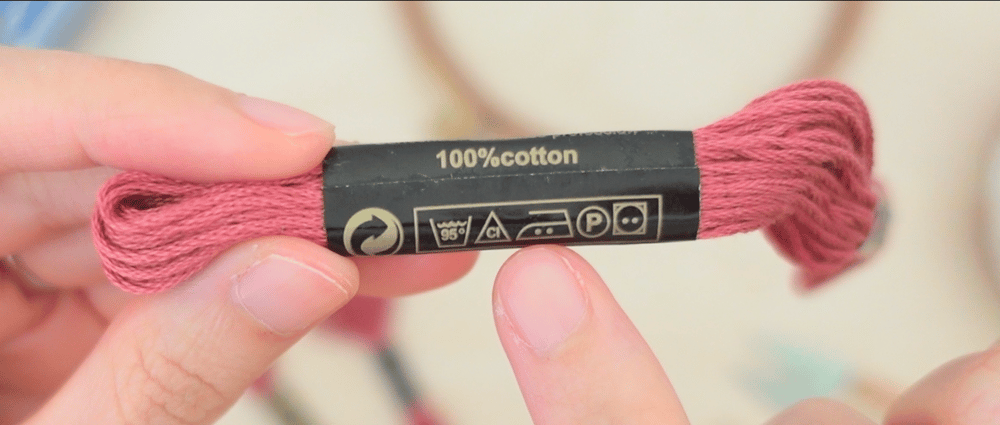
The thread label will typically specify the thread's materials, as well as if it is washable and iron-able, so look for these symbols if you decide to use them on clothing or similar items.
Embroidery Needles
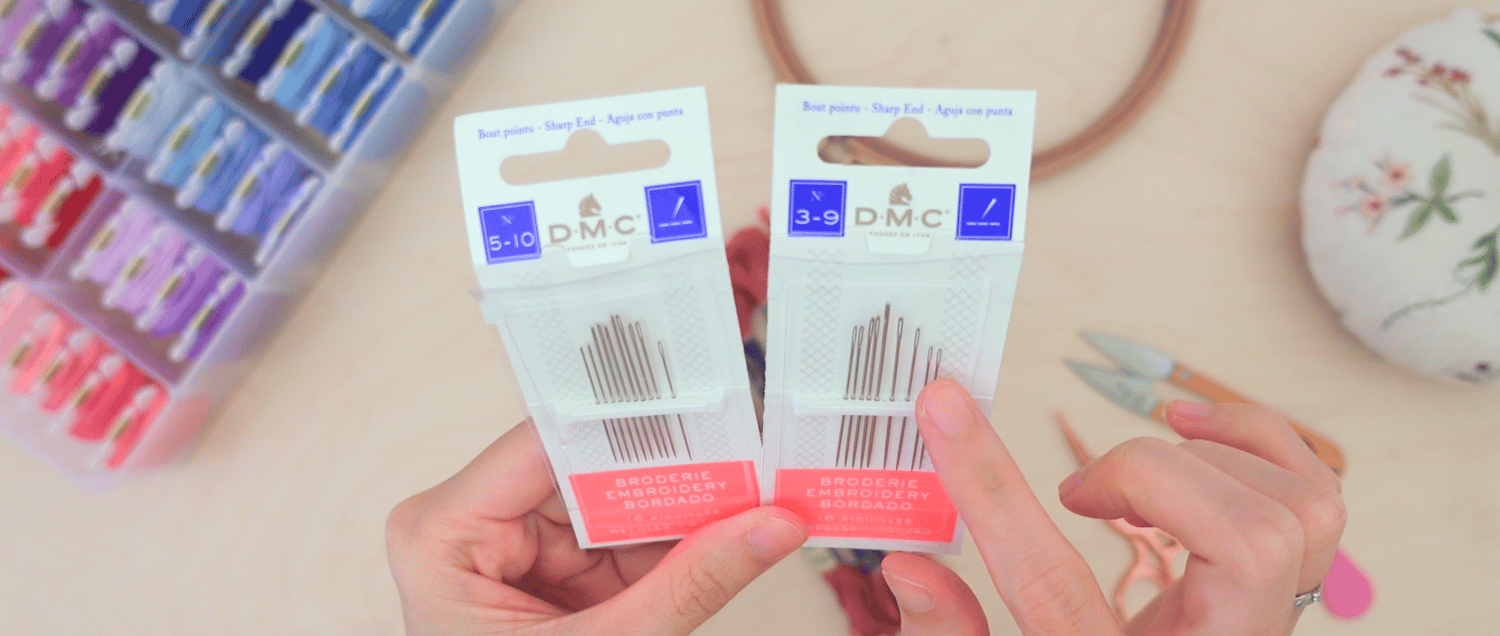
For versatility, I recommend DMC embroidery needles in sizes 3-9, as they accommodate common thread thicknesses (1 - 6 strands). This needle set is high quality and reasonably priced.
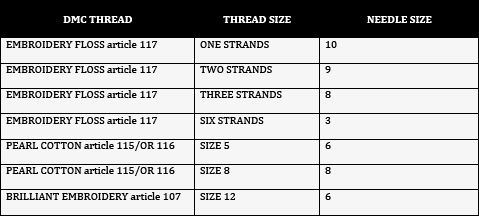
DMC needle guide
For highly texturized stitch where 6 strands of thread or more are used, blunt needles are often a good alternative to the usual sharp embroidery needles. The large eyes makes threading easier and the blunt ends will help you avoid catching the other threads during the process.
Some 3D stitches also require extra long needles/pins with large heads to use as an anchor for wrapping the working thread around but you definitely don't have to get these needles if you're just starting out.
Tip: Having multiple needles of the same size can save you from frequent thread changes. So it could be a good idea to have multiple sets.
Needle Threaders
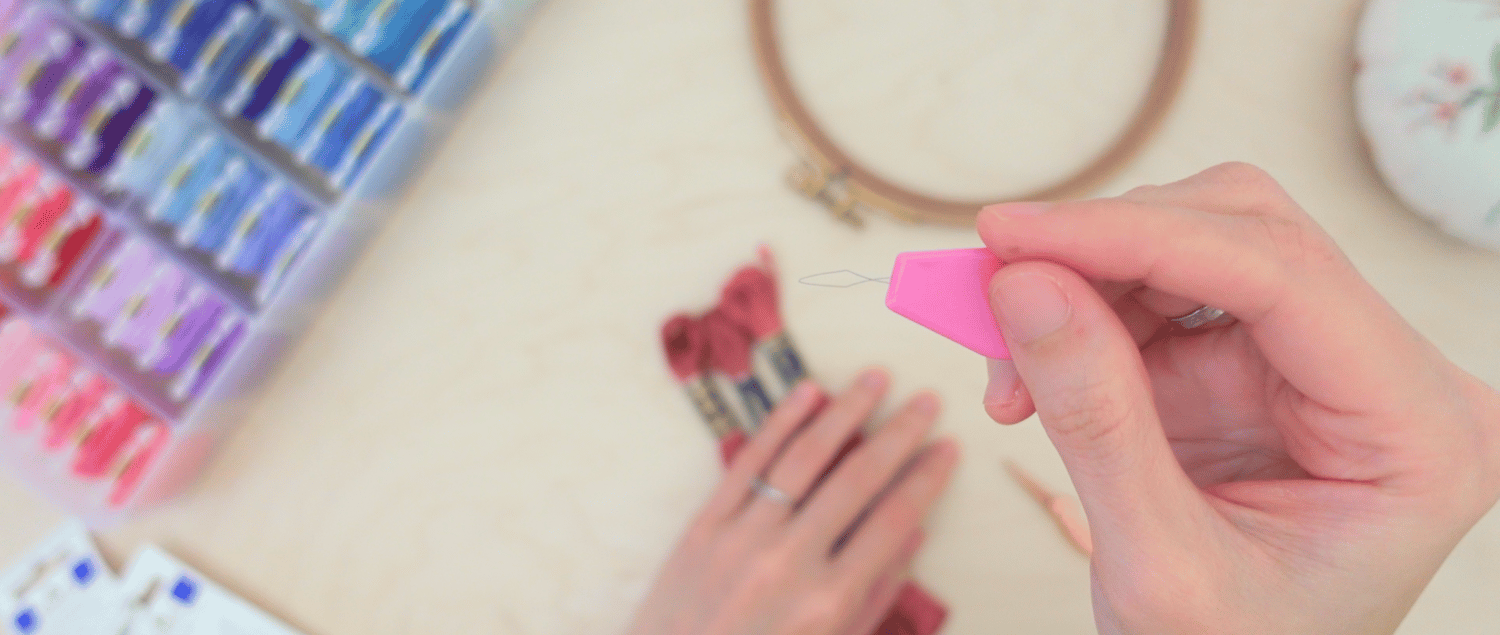
While totally optional, needle threaders have saved me so much time and sanity, eliminating the need for thread-licking or wizard tricks.
If threading one strand is hard enough, imagining six...
Scissors
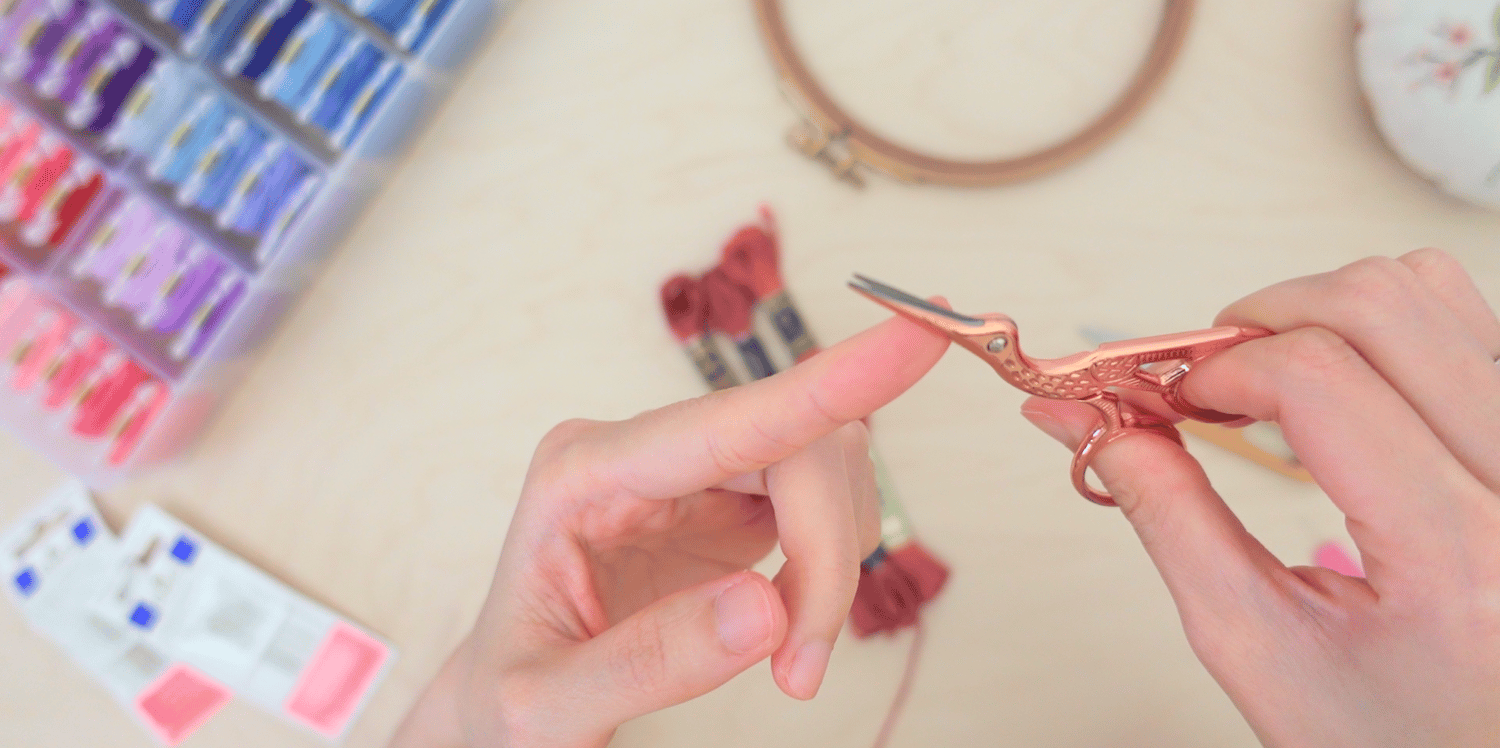
Any scissors that cut thread very close to the fabric surface will suffice. You probably already own a thread cutter that will work if you've done some sewing.
There are also many other options if you're looking for some cute scissors that are a bit different like these ones.
Fabrics
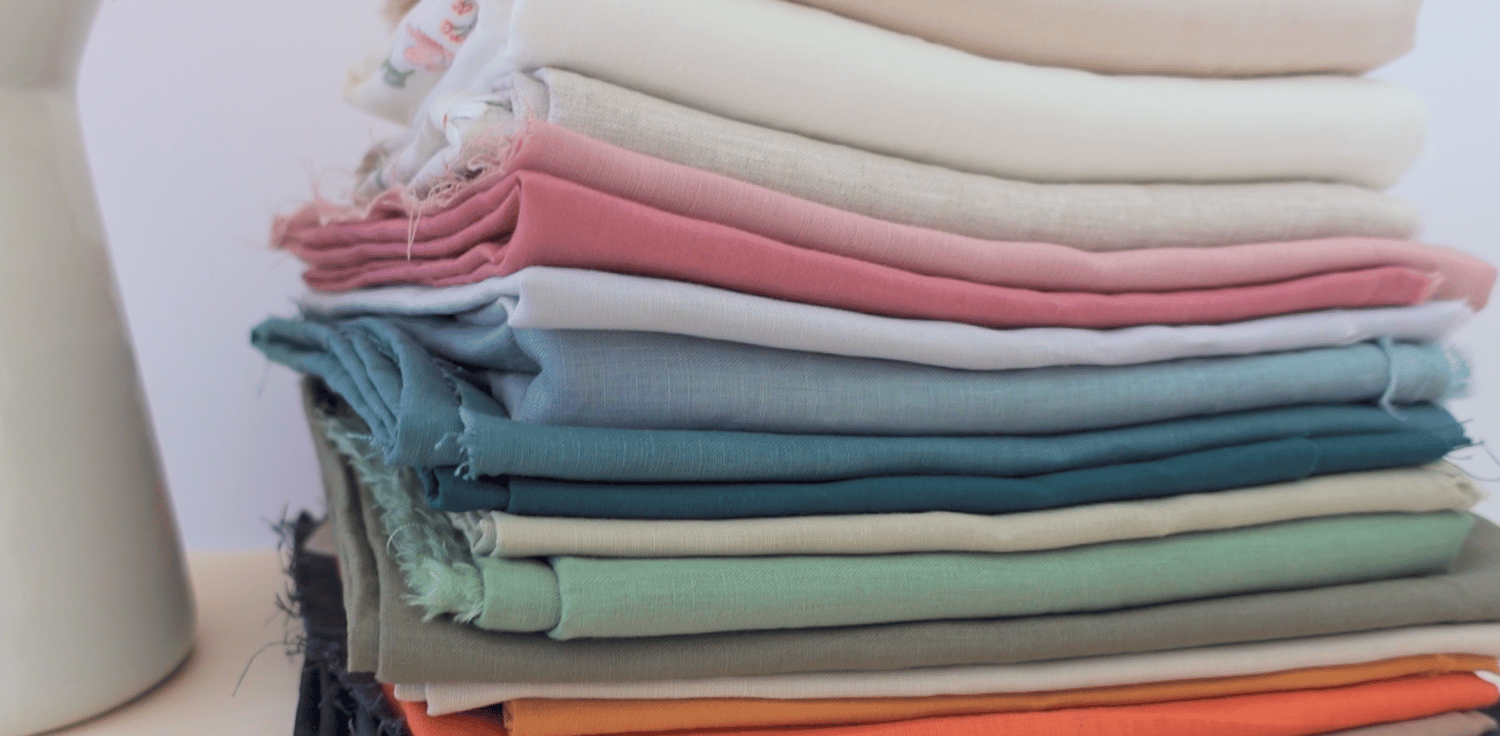
When you're starting out, it's best to choose non-stretch fabrics like cotton, linen, or muslin. I typically use medium weight fabric that you normally use for clothes making.
Select tightly woven fabrics for delicate embroidery projects and loosely woven fabrics for more textured projects, where you would use more strands of threads.
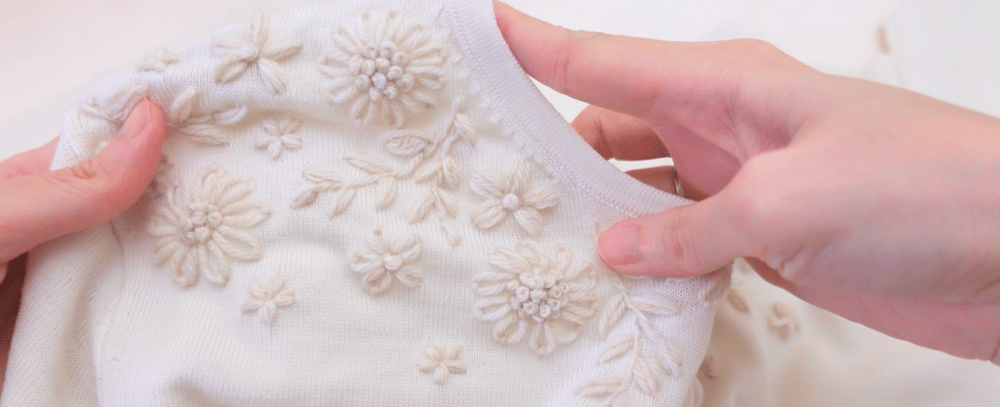
stretchy fabrics was quite challenging for me
Linen, with its texture, shine, and weight, is my favourite pick for hand embroidery, and it comes in such gorgeous colors!
Tracing Supplies
Drawing or transferring a design onto fabric can be done in many ways. Bellow are tools and methods that I used frequently.
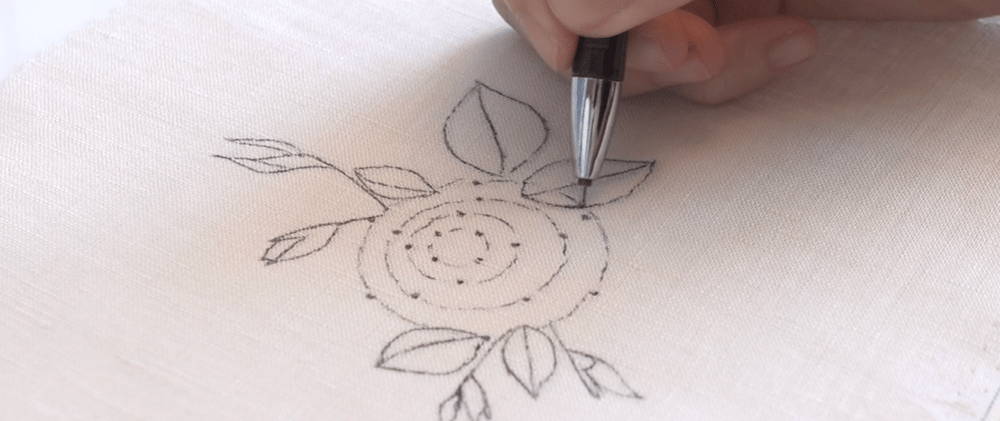
Heat eraser pens are my favourite for their forgiveness. The lines can be ironed off as soon as the design is complete, leaving no ink residue when washed.
Carbon transfer papers is another method, where dark papers are used for light fabrics and vice versa. Tip: you can make the lines bolder by adding an extra one or two layer of lightweight fabric beneath your main fabric white tracing.
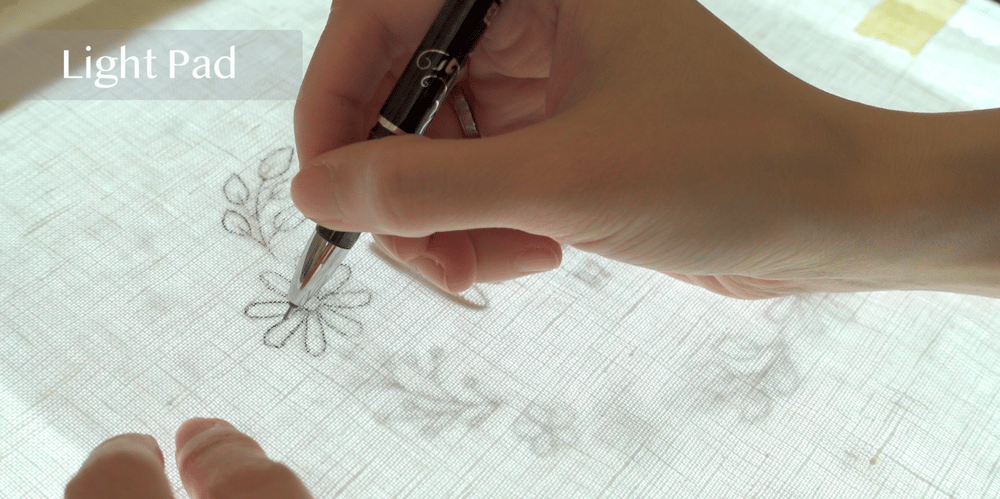
My most preferred method is actually to use a light pad along with heat-erasable pens. A reasonably priced light pad, like this A4-sized is perfect and fits any PDF pattern on my store.Tip: regardless of the method chosen, remember to secure the fabric and pattern with masking tape to avoid misaligned drawings.
Photo Fabric: this is a product that will work great with intricate patterns where it might be too time consuming to transfer all the details onto your fabric. Instead, you would print the designs directly from your computer onto this cotton paper. The catch? Your fabric's dimension is now limit to 8.5x11".
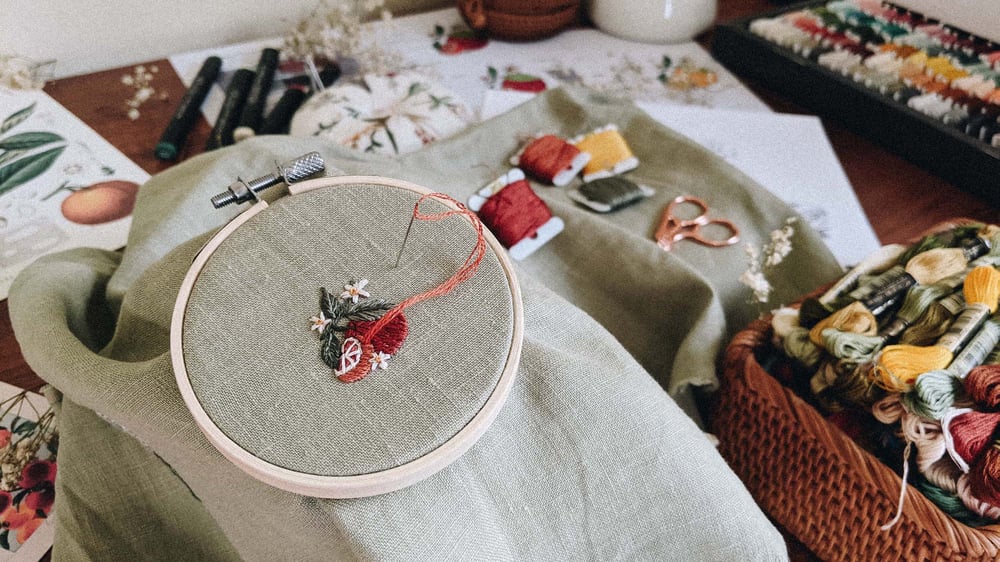
Finally, let's not forget patience and to enjoy the journey! Don't feel overwhelmed by the need to buy everything at once. You'll be amazed at what you can create with just some floss, a needle, and a hoop. Start with patterns or kits you love, and you can gradually build your collection from there. Happy stitching!
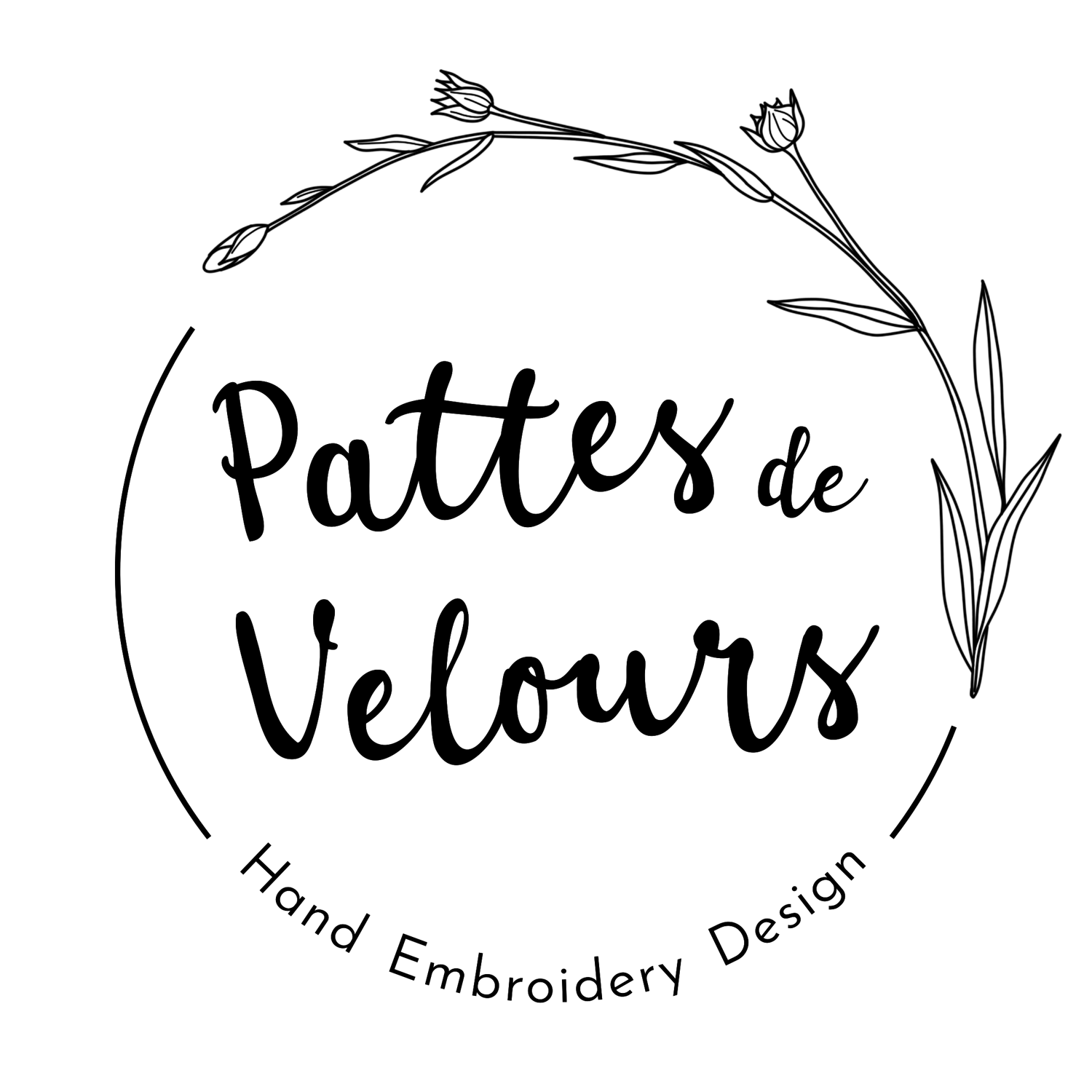

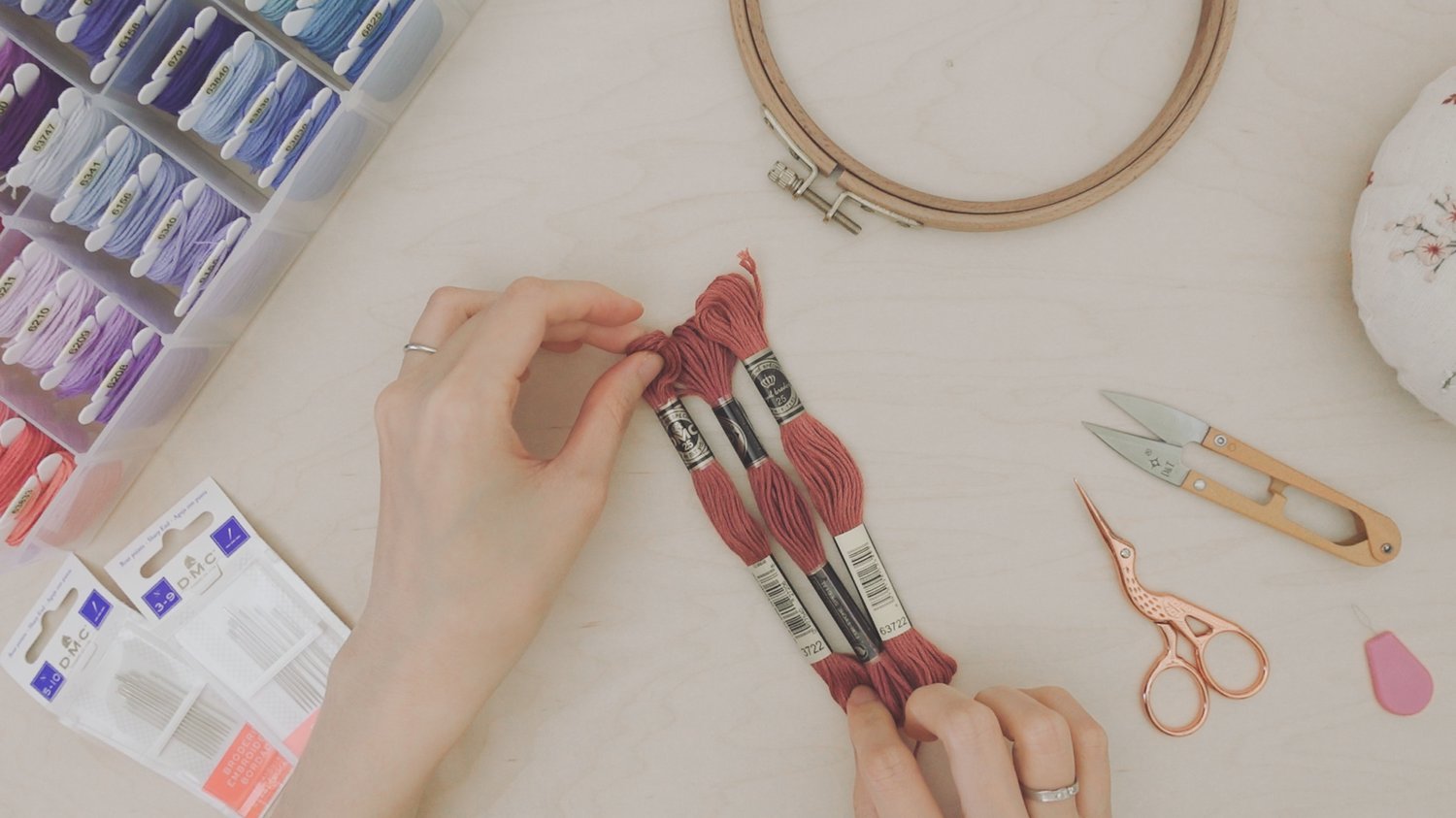
Comments ()